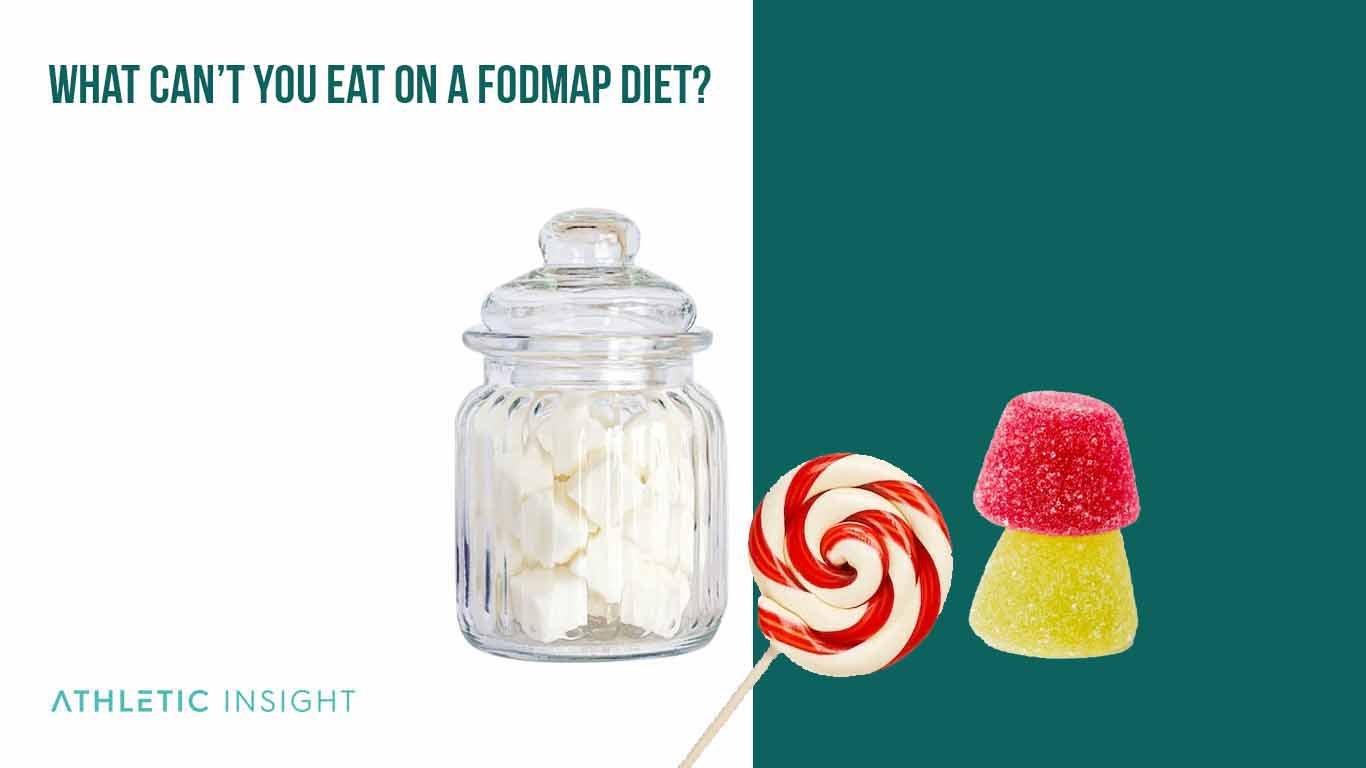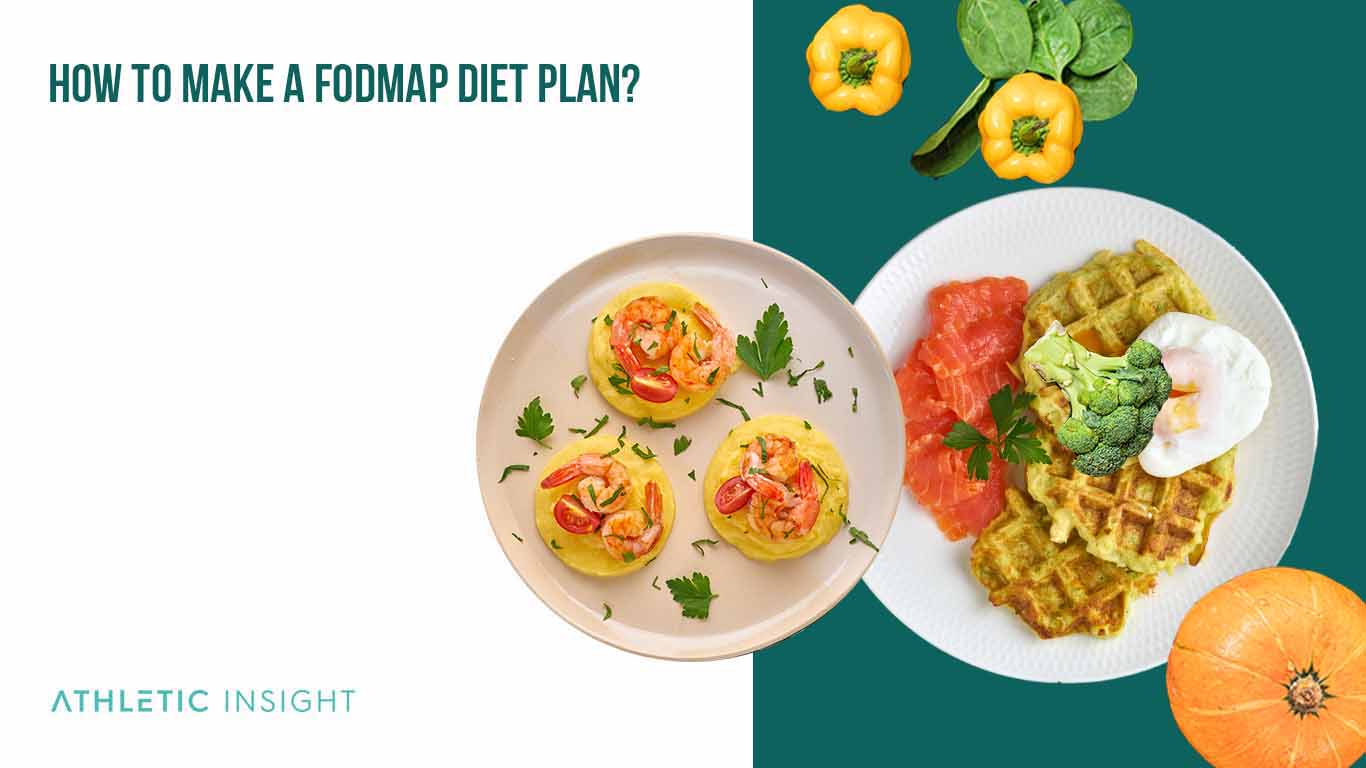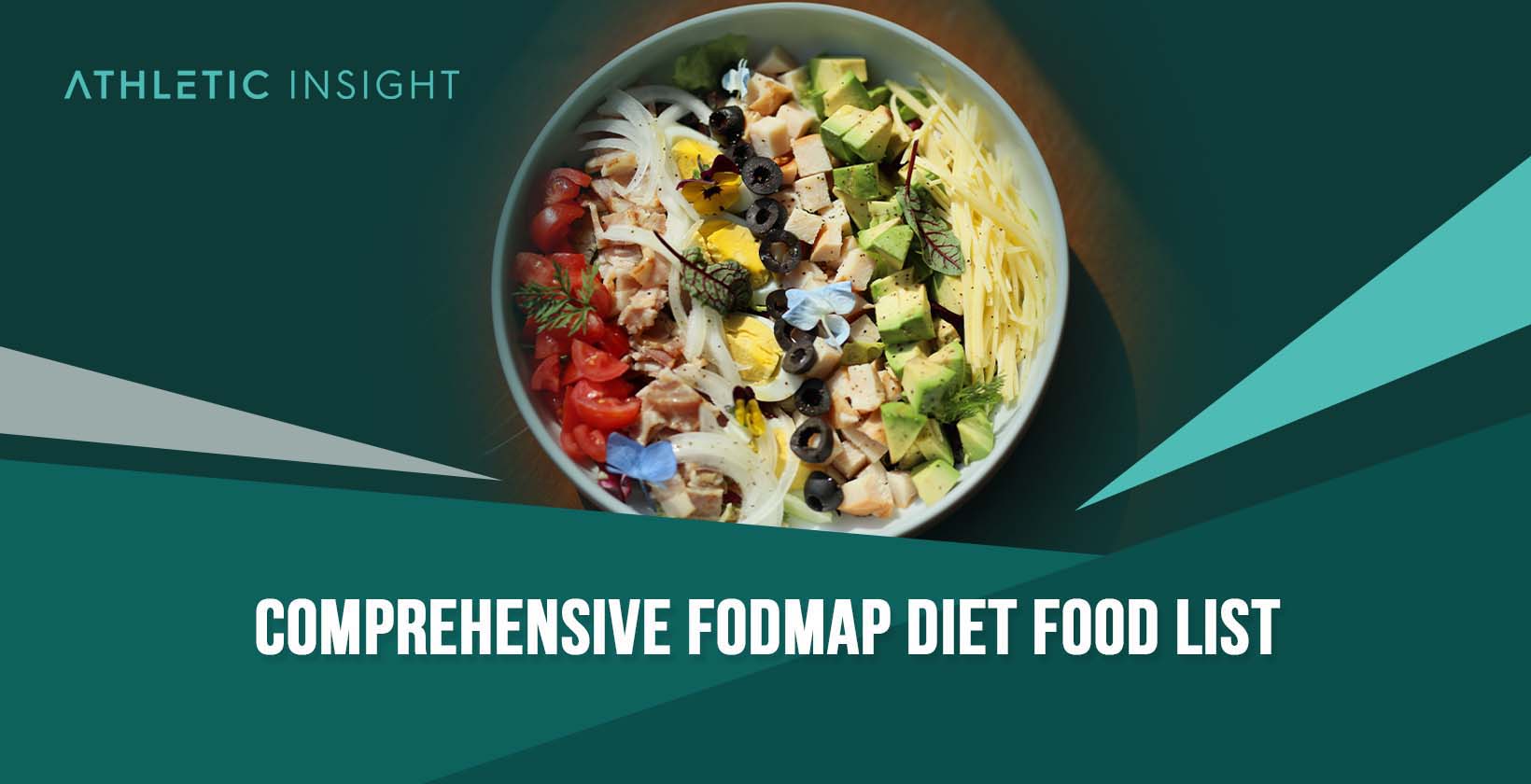The FODMAP diet might sound a little silly, but its health benefits for many are no joking matter. The concept refers to a nutritional diet low in particular sugars, summed up as FODMAP. So what does FODMAP stand for? Fermentable Oligosaccharides, Disaccharides, Monosaccharides, and Polyols.
These are carbohydrates/sugars that your small intestine tends to have trouble digesting and absorbing. This trouble is especially significant for those who suffer from small intestinal bacterial overgrowth (SIBO) and irritable bowel syndrome (IBS).
People with those disorders tend to suffer from stomach bloating, diarrhea, constipation, cramping, and excessive gas/flatulence after eating FODMAP-intense foods. The diet works first by eliminating all high-FODMAP food, then by slowly re-introducing them to find out which ones are causing the most problems.
According to some research, a low FODMAP diet has been shown to reduce gastrointestinal distress in 86% of participants.
What to eat on a Fodmap diet?
Many treasured foods are high in FODMAP sugars. However, don’t stress. We’re going to outline all the ones that could be troublesome for you– that doesn’t mean that each one is causing your distress. It’s possible, for example, that apples irritate you a great deal, but cheese is entirely fine.
Once you begin to reintroduce these foods, you’ll be able to discern between the ones that are harmful and harmless for you.
1. Dairy
Unfortunately, most dairy products are high in FODMAP sugars. While you don’t need to intrinsically avoid all food with lactose unless you’re lactose intolerant, you should avoid many dairy products.
Certain kinds of cheeses, especially hard ones, are perfectly acceptable. Cheddar, Pecorino, and Parmesan are some of the best. Goat Cheese, Mozzarella, Camembert, and Brie also all work for the diet.
Also, many lactose-free products tend to be low in FODMAP. So lactose-free yogurt, cream cheese, milk, and others are doable.
While you should be okay with consuming average serving sizes of the above foods, other ones require a small serving size to be low in FODMAP. If you desire whipped cream, traditional cottage cheese, or heavy cream, make sure you only engage in those in tiny portions.
2. Fruit
The primary FODMAP sugars in fruits are fructose (in excess) and sorbitol. Pears, cherries, apples, mangoes, figs, and watermelon are all very high in fructose – that’s why they’re so beloved!
Apples and pears also contain high amounts of sorbitol, making them especially potentially dangerous for those with sensitive digestive systems.
There are, nonetheless, low FODMAP fruits, like oranges, cantaloupes, pineapples, and kiwi fruit.
3. Vegetables
In vegetables, the most prominent FODMAPs are mannitol and fructans. Artichoke, leek, garlic, and onion are high-fructan veggies, while cauliflower, mushrooms, and snow peas are high-mannitol.
Fortunately, high-FODMAP vegetables are somewhat less common than in other food groups. Several low FODMAP vegetables are available on the market, like eggplant, cucumber, carrots, potatoes, green beans, bok choy, and zucchini.
4. Protein
When it comes to protein sources, there are two primary things you need to avoid. Legumes/pulses and meats that have been processed or heavily marinated. Most poultry, red meat, and seafood are fine on a low FODMAP diet – the processing materials and marinades cause problems.
Outside of meat, look into firm tofu, eggs, and tempeh as sources of protein that work on this kind of diet.
5. Nuts/seeds
Nuts and seeds are often full of good nutrients like protein. If you want a nut-heavy diet that is also low in FODMAP sugars, focus on walnuts, peanuts, pumpkin seeds, pepitas, and macadamias.
6. Grain
There is a reason grains are the foundation and biggest portion of the food pyramid – they contain nutrients that are necessary for proper human functioning.
Two things are crucial to avoid. First, avoid highly processed grain products like breakfast cereals and snacks. Second, avoid high-fructan grains like wheat, barley, and rye. Note that these are dangerous because of their high fructan content, not because of the gluten they contain.
Wheat is one of the highest sources of FODMAP sugars in the United States – not because wheat has a high concentration of fructans, but because it simply makes up so much of the American diet.
But don’t despair. There are many low FODMAP grains out there. Quinoa and rice are both excellent grain bases that you can use as a substitute for wheat-based pasta. Instead of heavily processed breakfast cereals, eat a simple bowl of corn flakes or oatmeal.
Oats and sourdough bread are also excellent grain sources.
What Can’t You Eat on a Fodmap Diet?
Beyond what we’ve discussed above, it’s also vital to avoid high-fructose corn syrup as much as you can. That’s one of the biggest IBS culprits in heavily-processed diets. Honey can also cause problems, so that’s off the table as a substitute.

Sadly, you also need to stay away from many sugar-free sweets as well. Before consuming a diet soda or sugar-free candy bar, check to make sure it doesn’t contain any of the following.
- Sorbitol
- Mannitol
- Xylitol
- Malitol
- Isomalt
Also, make sure you stay away from most dairy products we didn’t note as low FODMAP foods. Those can be challenging, as they are everywhere within the American diet.
How to Make a Fodmap Diet Plan?
The most important first step is to reach out to a doctor or dietitian. It’s unwise to engage in this just based on internet-based research. While that kind of information is certainly helpful for navigating and learning about the process, only a trained professional will be able to tailor a diet plan to your particular circumstances.

This step is doubly necessary if you are underweight, overweight, or have other dietary challenges. Those complications make professional counsel, which is helpful for everyone, absolutely crucial to respond to your specific needs.
Beyond that, the Fodmap diet tends to follow three steps. First, you’ll stop eating all high-FODMAP foods. This is the hardest part of the process – you’ll feel tempted at many points throughout this step, but you must stay strong.
The timeline of this will depend on your body’s individualized needs, but most doctors recommend operating within this stage for two to six weeks. During this time, pay close attention to your body and whether your symptoms are decreasing.
Most people experience symptom relief during this step, but your problems are likely not nutritionally related if you don’t.
After that, you will begin reintroducing the foods. Take this part slowly. You’ll want to bring back one high-FODMAP food every three days here. If you start to feel symptoms return, you know that your body doesn’t react well to that food, and you can eliminate it from your diet moving forward.
Once you’ve identified all the problem foods, you can proceed with a life of much greater comfort.
1. Fructose
Fructose is one of the most prevalent high-FODMAP compounds in North American diets. It’s a monosaccharide – the “M” in the acronym – and it’s found in several different places, including the following foods.
- Apples
- Mangoes
- Honey
- Tropical juices
- Agave nectar
- Asparagus
- Sugar snap peas
- Figs
- Cherries
- Pears
- Wheat-based foods
- Broccoli
- Chutney
- Leeks
- Mushrooms
- Onions
- Many tomato products
- High-fructose corn syrup
When you’re in the elimination phase of the diet, you will need to avoid all of these foods to properly conduct the treatment.
2. Lactose
Lactose is another potentially harmful compound that you will need to avoid to pursue FODMAP correctly. This includes the following foods.
- Cow’s milk
- Cream cheese*
- Buttermilk
- Ice cream*
- Custard*
- Sour cream*
- Ricotta cheese
- Yogurt*
- Pudding*
For the items marked with an asterisk, you only need to avoid versions of the food that use cow’s milk or cream. For example, ice cream made with a milk alternative is not nearly as problematic as traditional ice cream.
3. Fructans
Fructans, too, are a culprit behind many bloated stomachs. To eliminate these, you will need to avoid the following.
- All wheat-based products
- Garlic
- Barley
- Cabbage
- Onions
- Scallions
- Shallots
- Pistachio
- Broccoli
- Artichoke
- Chicory root
4. Galactans
These are tough because they cover a lot of substitutes for other foods and ones that people tend to rely on for regular functioning. But remember – you are not removing these from your everyday food intake permanently. The following foods are high in galactans.
- Soy-based products
- Miso
- Dried beans
- Peas
- Hummus
- Moderate to large amounts of coffee (over 1 cup per day)
- Lima beans
5. Polyols
Polyols are right at the end of the FODMAP acronym. They overlap with many of the compounds we’ve already mentioned, with an especially challenging addition – many artificial sweeteners. These can be especially challenging to navigate given that high-fructose corn syrup, one of the most popular sweeteners, is also high-FODMAP.
Plain sugar, however, is perfectly fine in this diet program, so keep that at the forefront of your mind.
- Artificial sweeteners (refer to our list above)
- Cherries
- Pears
- Cauliflower
- Snow peas
- Sweet corn
- Mushrooms
- Plums
- Apples
How many calories can you eat while on a Fodmap diet?
The FODMAP diet does not have a set amount of calories for you to consume. It is a targeted elimination diet that works to relieve specific symptoms of irritable bowel syndrome and small intestinal bacterial overgrowth, not a weight-loss diet.
That said, many people on this diet struggle to consume enough calories for their regular functioning because it sweeps aside wide swaths of normal food intake. This happens for a variety of reasons, often due to a combination of high-calorie needs (typically affected by a person’s size, metabolism, or activity levels) and improper substitutions during the elimination period.
When you take away so many staple foods from your regular diet, you need to make sure you’re thinking carefully about how to effectively substitute new foods in place of the high-FODMAP ones so you can maintain effective calorie levels.
To ensure that you are consuming enough calories, make sure you continue to eat regular meals (and even healthy snacks) with foods high in fat and protein. Don’t forget to eat a lot of low FODMAP grains like rice, too.
What percent of daily fat intake do you need while doing a Fodmap diet?
FODMAP diets do not recommend a specific level of daily fat intake, but that doesn’t mean that you should ignore your fat levels. There are two opposing dynamics at play here. The recommendations for the FODMAP diet specifically and the recommendations for IBS diet plans in general.
If you’re just focused on the FODMAP diet, you should lean into high-fat foods, as we discussed in the prior question. This is important because fatty foods tend to contain high-calorie levels and prove quite filling for the eater. For example, some estimates hold a FODMAP diet to have fats as 44% of total caloric intake, more than 10% more than the maximum recommended level.
That said, if you’re looking at more holistic dietary changes, the IBS Food Pyramid recommends the opposite approach. Within that framework, the authors recommend that those who suffer from IBS limit themselves to at most 50 grams of fat per day, with a majority of that being healthy fats like olive oil.
These two perspectives approach the question of nutrition from different angles. The FODMAP diet is focused on identifying specific food triggers that make your symptoms worse, while the IBS Food Pyramid works towards the overall health of those who suffer from IBS.
While you’re amid the FODMAP diet, it’s likely wisest to follow the counsel intended for that diet specifically. After that, however, then IBS sufferers should look at the above advice on fat intake.
What percent of daily protein do you need doing a Fodmap diet?
As with fats, there is not an established daily protein level for this diet. But there is less conflict here between FODMAP recommendations and those for IBS sufferers writ large – both encourage high protein intake.
That said, it can be very challenging to consume large amounts of protein when in the elimination stage of the diet. As a result, estimates hold a typical FODMAP level of protein at around 15% of total caloric intake.
Is the Fodmap diet food list expensive?
The answer to that question wholly depends on your taste. At first glance, it can look very cheap since it focuses on foods like rice, plain-cooked meats, green beans, and peanuts.
But since the diet involves the removal of so many foods that enhance flavors, many people find that to maintain a level of tastiness they can stomach, they need to shell out more money for highly specialized low FODMAP substitutes.
What is a sample Fodmap menu for one week?
Day 1
Breakfast – Omelet with goat cheese and spinach
Lunch – Margherita or cheese pizza with a gluten-free crust
Snack – Smoothie with berries
Dinner – Sushi with avocado and salmon
Dessert – Frozen yogurt without lactose and high-fructose corn syrup
Day 2
Breakfast – Oatmeal paired with walnuts and raspberries
Lunch – Salad topped with feta cheese, strawberries, and un-marinated chicken
Snack – A quarter cup of chickpeas
Dinner – Fried rice with sauteed chicken
Dessert – Low FODMAP rhubarb and strawberry crumble
Day 3
Breakfast – Rice cake topped with peanut butter and banana
Lunch – Beef soup
Snack – Handful of peanuts
Dinner – Spaghetti bolognese using quinoa- or rice-based pasta
Dessert – Sliced kiwi
Day 4
Breakfast – Overnight oats topped with raspberry
Lunch – Vegetable soup (no beans)
Snack – Carrots with peanut butter
Dinner – Beef tacos (remember to use corn tortillas)
Dessert – Chocolate peanut butter rice balls
Day 5
Breakfast – Rice cake with a fried egg and cheddar cheese
Lunch – Lentil chili
Snack – Salted sunflower seeds
Dinner – Hearty stew with potato and beef
Dessert – Dark chocolate
Day 6
Breakfast – A serving of pineapple with one or two hard-boiled eggs
Lunch – Romaine lettuce with tuna salad
Snack – A slice of brie with raspberry jam
Dinner – Zucchini noodles with sliced pork
Dessert – Blueberry oat bars
Day 7
Breakfast – Egg scramble with collard greens and potatoes
Lunch – Quinoa with radishes and ground beef
Snack – Dairy-free popcorn
Dinner – Chicken and rice seasoned with lemon pepper
Dessert – Hot chocolate (made with water)
What is the difference between a High and Low Fodmap food list?
High FODMAP foods are ones that you need to stop eating during the elimination stage of the diet while replacing them with low FODMAP ones.
Do you lose weight doing the Fodmap Diet?
The FODMAP diet is not intended as a weight-loss program – it is exclusively intended to eliminate foods causing intestinal distress. That said, because it removes so many foods from your diet, many participants lose weight in the process.
This can work on a purely psychological level as well as a nutritional one – since the diet requires you to be unusually intentional about your food choices, you can take that opportunity to establish healthier nutritional rhythms than you had previously.
You can further augment the weight loss potential of the diet through the reintroduction period. If you focus on reintroducing healthy foods at the beginning and waiting until the end for less healthy ones, you maximize the health benefits of the whole affair.
What are some tips for eating out on a Low Fodmap diet?
The most important thing to do when eating out on this diet is to research and prepare. Find restaurants that already have low FODMAP dishes or accommodations. You will find most success here with vegan establishments and ones that cater intentionally to people with dietary restrictions.
If you can, call the restaurant beforehand (outside of busy hours) to ask about their low FODMAP offerings and warn them before you will be present that evening.
Order simple foods – plain meats with vegetables are the best options here. Stay away from dishes with a lot of sauce or seasoning, as those will likely be challenging to accommodate your lack of garlic and onion.



